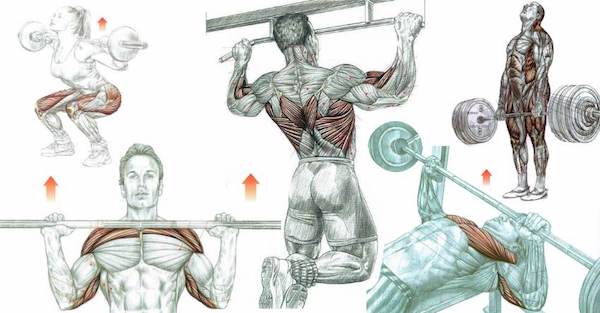No products in the cart.
Are Isolation Exercises Worthless?

While it is true that you can get good results with any exercise so long as you are consistent, it is also true that superior exercise selection can lead to greater and faster results.
A lot of the time, people seem to separate exercises by whether they are good or not based on opinion. Sometimes they will use some science to back up this opinion, but the truth is that there are very few worthless exercises out there. The trick is finding when each exercise is most appropriate.[toc]
What are Compound Exercises?

Compound exercises are exercises that work more than one muscle group, for example a barbell squat works the quadriceps, gluteals, and hamstrings (with less emphasis on other muscles such as the abdominals, trapezius etc). A bench press works the pectorals, deltoids, and triceps.
Compound exercises use a combination of muscle groups to allow you to lift a heavier weight, which is why you can deadlift or squat more weight than you can on a leg extension.
What are Isolation Exercises?
Isolation exercises are any exercise that works one muscle on its own. Actually this isn’t completely accurate, for example a barbell bicep curl would be counted by many as an isolation exercise because it mostly targets the biceps.
But there will be some assistance from the Brachialis muscle and the Brachioradialis muscle.
No exercise is a true isolation exercise. But there are a lot of exercises that mostly target one particular muscle and these are known as isolation. Other examples of isolation exercises: Leg extension, leg curl, tricep pressdown.
What does the science say?

There is a lot of contradictory information that comes from scientific studies, particularly the further back you go.
In 1998 a study by Chilibeck et al reported that in a review of the relevant literature single-joint (isolation) exercises led to earlier increases in hypertrophy than multi-joint (compound) exercises [1].
This means that if you followed an isolation exercise routine you would get bigger muscles faster than if you followed a compound exercise routine. Though over time not only would compound exercises catch up, they would most likely surpass isolation exercises in terms of muscle-growth.
The reason for the initial progress differences is that because the majority of compound movements are much more difficult to perform it means that there would be a “prolonged neural adaptation” that would delay hypertrophy from occurring.
This theory was also backed up by a study by Giannakopoulos et al (2004) who found that compound movements were a lot more effective long-term at improving muscular strength.
They proposed that a strength program should initially focus on isolation movements to build initial strength and size, but then concentrate on compound exercises for the long term [2].
A more recent study by Gentil et al (2013) compared a compound-exercise only program and a compound exercise program with added isolation exercises [3]. The study found no statistical difference between the two groups, meaning that there were no advantages to following either model over the other.
Two years later Gentil returned to the subject and concluded that multi-joint and single-joint (compound and isolation) both MJ and SJ exercises were equally effective at increasing strength and size in untrained men. As a result selection could be based on what was available to them [4].
This last study is very interesting, on the surface it sounds like it is saying train with either and that it doesn’t matter. But remember this study was on untrained men, which means that it is actually saying that in the initial stages of training you can use either isolation, compound, or a mixture of both.
Down the line though, compound movements would probably be advisable.
Another factor that is often overlooked is the hormonal impact, many studies have shown that bigger exercises (deadlifts, squats etc) can lead to increased release of testosterone and growth hormone [5][6][7].
More testosterone and growth hormone release means more fat loss, more muscle gain, and more strength. Obviously this will at first be negated by the difficulty of the exercise (as we mentioned earlier) but over time these additional benefits will make compound exercises more worthy of your time.
When would Isolation Exercises be Effective?
Clearly there is a benefit to adding isolation exercises into your program when you are starting out.
They are simple to perform, less intense, and will possibly lead to greater initial hypertrophy.
However, once you have been training for a while you will probably benefit from adding in more compound exercises. If you are a very experienced lifter then compound exercises should make up the majority of your program with some isolation work thrown in here and there as a supplementary exercise.
Save
Save
